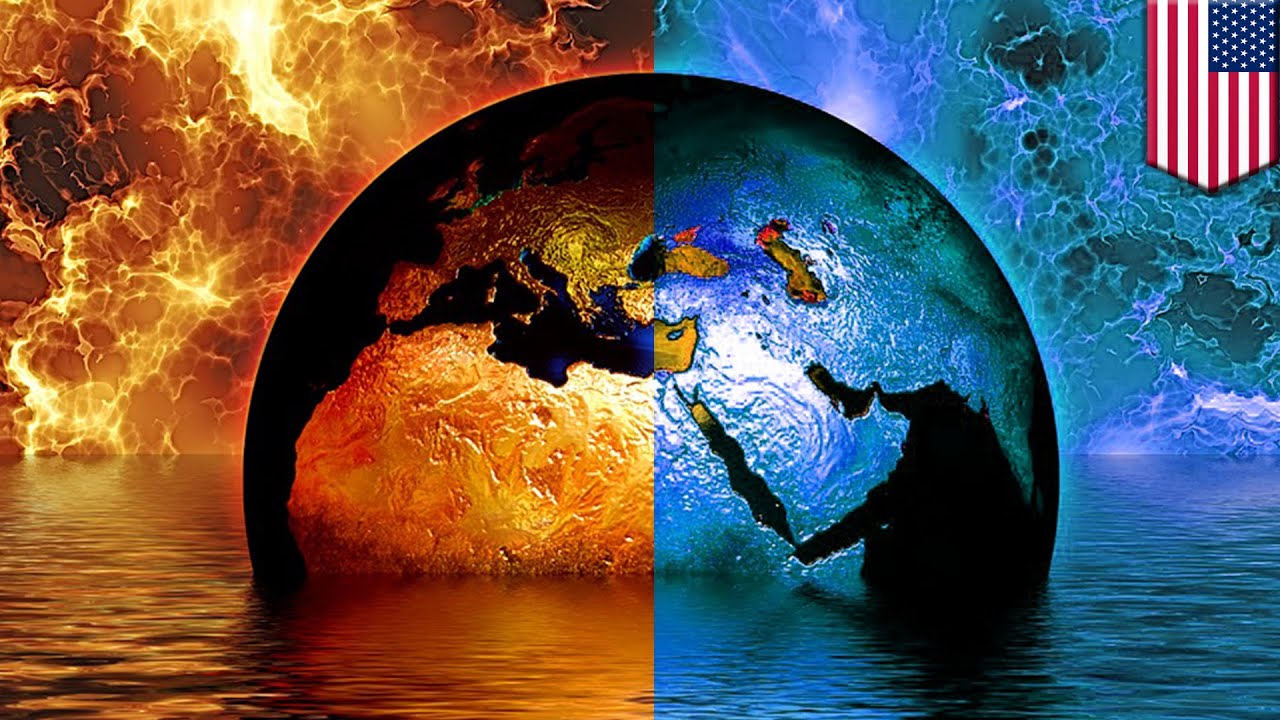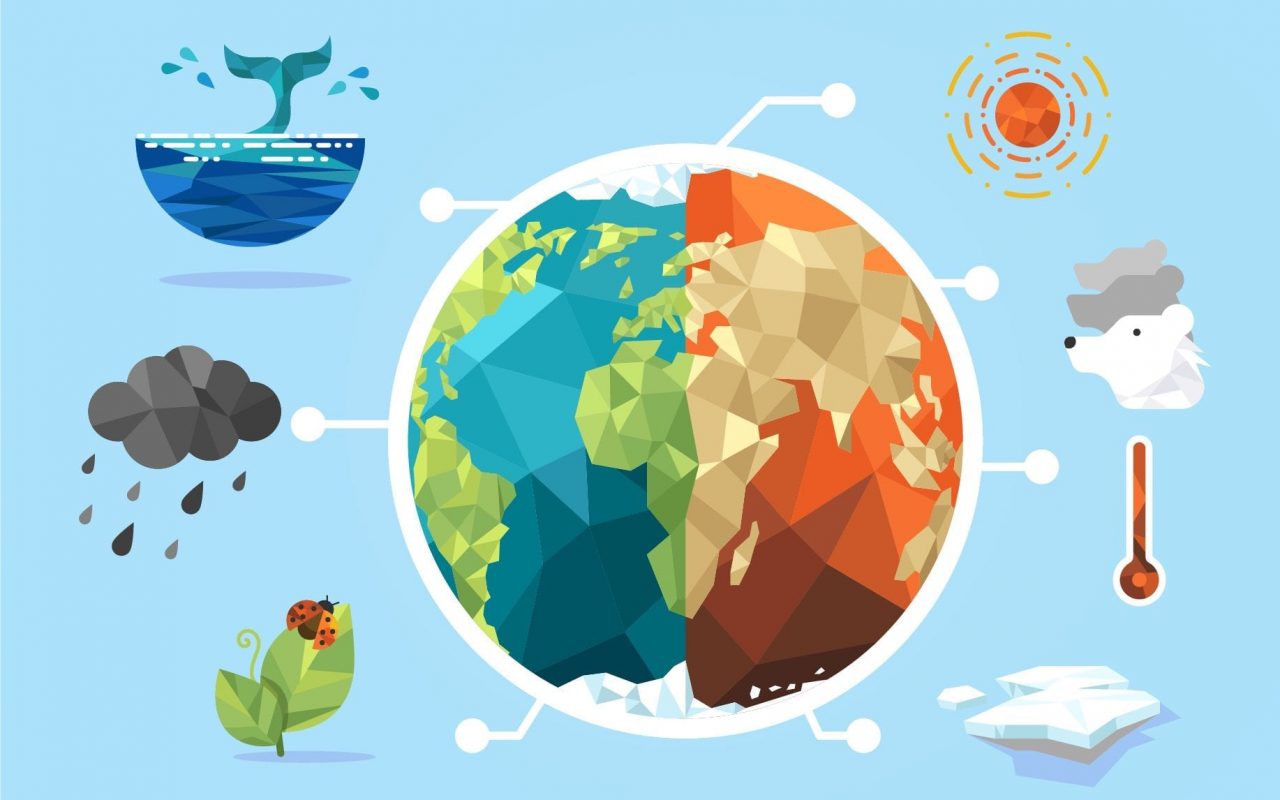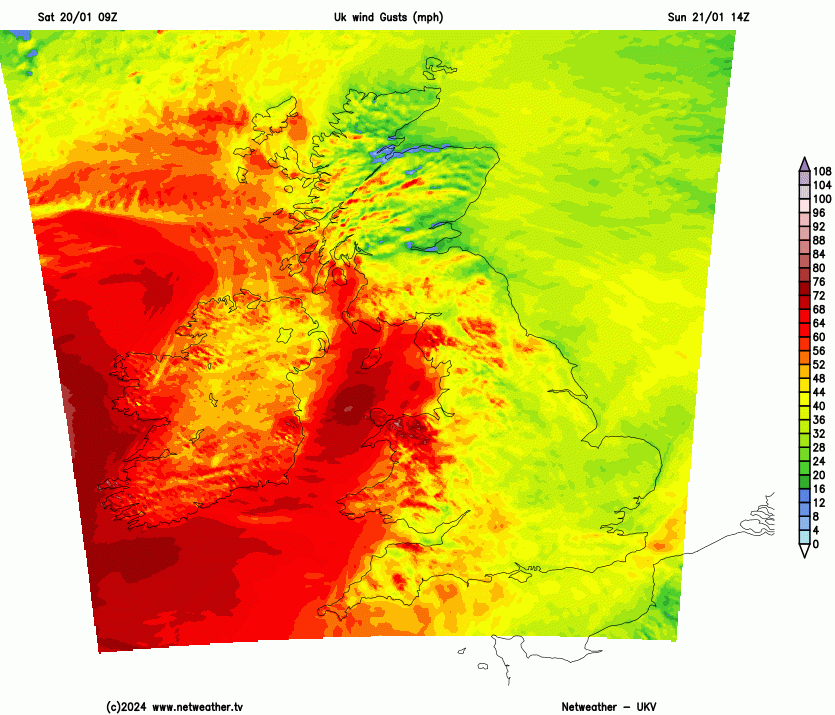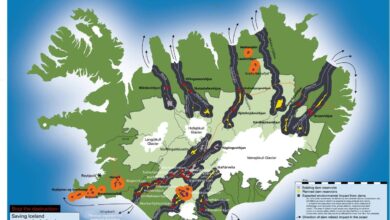
A New Era in Global Heat Unfolding Impacts
A new era in global heat is upon us, characterized by accelerating warming trends and unprecedented impacts on our planet. This isn’t just another chapter in climate change; it’s a significant shift, demanding a global response unlike any before. We’ll delve into the defining characteristics of this new era, exploring its drivers, impacts, and the potential future scenarios.
Get ready to understand the challenges and potential solutions to this pressing issue.
This new era is marked by a noticeable acceleration in global warming compared to previous periods. Scientists have observed a clear pattern of rising temperatures, driven by human activities, and are projecting even more drastic changes in the coming years. This shift demands immediate attention and collaborative efforts to mitigate its effects and adapt to the realities of a rapidly changing climate.
Defining the New Era

The global climate is undergoing a profound shift, entering a new era characterized by unprecedented heat and its cascading effects. This new era isn’t simply a continuation of previous warming trends; it’s a qualitative leap, marked by a faster rate of change and more extreme weather events. The scientific community has reached a clear consensus on this point, and the evidence is increasingly undeniable.This new era in global heat is distinguished by an acceleration of warming beyond what previous periods of global warming exhibited.
This acceleration is directly linked to human activities, particularly the release of greenhouse gases into the atmosphere. The consequences are becoming more pronounced and widespread, affecting ecosystems, human societies, and the very fabric of life on Earth.
Distinguishing Characteristics of the New Era
The current era of global warming stands apart from previous climate change phases primarily due to its rapid pace and the intensity of the accompanying effects. While natural climate variability has always played a role, the current warming trend is unequivocally driven by human activities. The unprecedented rate of increase in greenhouse gas concentrations is causing a significant and accelerating warming effect.
This acceleration, coupled with the complex interactions within the Earth’s climate system, is producing more extreme weather events, such as heatwaves, droughts, floods, and wildfires, at a scale never before witnessed.
Scientific Consensus on Accelerated Warming
The scientific consensus firmly supports the idea that global warming is accelerating. Numerous peer-reviewed studies and reports from organizations like the IPCC consistently demonstrate this trend. These studies use various methods, including analysis of historical temperature records, ice core data, and climate models, to quantify the rate of warming. The consistent finding is that the rate of warming in recent decades surpasses any previous natural variability.
“The overwhelming scientific consensus is that the current warming trend is unequivocally the result of human influence.”
IPCC Sixth Assessment Report
This consensus is based on a vast body of evidence, making the reality of accelerated global warming undeniable.
Comparison of Global Temperatures Across Different Periods
The following table illustrates the significant difference in average global temperatures across various periods, showcasing the accelerating trend. Note that these are illustrative examples and not exhaustive.
| Period | Average Global Temperature (°C) | Description |
|---|---|---|
| Pre-industrial (1850-1900) | 13.5 | Baseline average temperature before significant industrialization. |
| Recent Decades (2000-2023) | 14.7 | Average temperature over the last two decades. Note the noticeable increase. |
| Projected Future (2040-2060) | 15.5-16.0 | Projected average temperatures, illustrating the continued acceleration and range of estimates. |
This table demonstrates the clear upward trend in global average temperatures, highlighting the acceleration of warming over time. The projections for the future emphasize the need for immediate and substantial action to mitigate the escalating impacts of climate change.
Drivers and Impacts
The escalating global heat is a complex phenomenon, driven by a multitude of interconnected factors. Understanding these drivers and their consequences is crucial for developing effective mitigation and adaptation strategies. This new era demands a comprehensive approach to address the multifaceted challenges it presents.The current era of intense global heat is not simply a natural fluctuation; rather, it is a direct consequence of human activities.
It feels like we’re entering a new era in global heat, with record-breaking temperatures seemingly the norm. While the scientific community works tirelessly to understand the complexities of this shift, it’s also fascinating to see how this new reality impacts the world of celebrities, particularly those like stars Harley Johnston, Oettinger, and Benn, as seen in their recent news coverage.
This recent celebrity news offers a glimpse into the broader cultural anxieties surrounding this new climate reality. Ultimately, the planet’s temperature continues to rise, demanding our attention and action.
These activities have significantly altered the Earth’s climate system, creating a cascade of effects that are now profoundly impacting ecosystems and human societies worldwide. Recognizing the interwoven nature of these drivers is critical to crafting solutions.
Primary Drivers of Global Heat
Human activities are the primary drivers behind the escalating global heat. Fossil fuel combustion, deforestation, and industrial processes release greenhouse gases into the atmosphere, trapping heat and increasing the Earth’s temperature. These activities have significantly altered the natural balance of the planet’s climate system.
- Fossil Fuel Combustion: The burning of fossil fuels like coal, oil, and natural gas for energy production is the largest source of greenhouse gas emissions. This release of carbon dioxide, methane, and nitrous oxide traps heat in the atmosphere, driving global warming. The Paris Agreement, for instance, aims to mitigate the consequences of this phenomenon by limiting global warming.
- Deforestation: Forests act as carbon sinks, absorbing significant amounts of carbon dioxide from the atmosphere. Deforestation reduces this capacity, releasing stored carbon and contributing to the greenhouse effect. The Amazon rainforest, a crucial carbon sink, is facing increasing deforestation, leading to heightened global temperatures.
- Industrial Processes: Certain industrial activities, including cement production and agricultural practices, release significant amounts of greenhouse gases. These emissions, along with the release of other potent greenhouse gases, exacerbate the problem.
Interconnectedness of Drivers and Cumulative Effects
The drivers of global heat are deeply interconnected, creating a cumulative effect that amplifies the impact on various systems. For example, deforestation not only releases carbon but also disrupts rainfall patterns, which can further exacerbate droughts and heat waves. This complex interplay highlights the need for comprehensive strategies that address all relevant factors.
Impacts on Ecosystems
The increasing global heat is already impacting various ecosystems. Forests, oceans, and agricultural systems are experiencing profound changes.
- Forests: Rising temperatures can stress tree growth, increase susceptibility to wildfires, and shift the geographic distribution of tree species. This poses a threat to forest biodiversity and ecosystem services. For example, the increased frequency and intensity of wildfires in California are a clear manifestation of this impact.
- Oceans: Rising temperatures are causing ocean acidification, harming marine life and disrupting marine ecosystems. Coral bleaching events, driven by warmer waters, are decimating coral reefs, highlighting the interconnectedness of the global climate system.
- Agriculture: Changing temperatures and precipitation patterns are impacting crop yields and livestock production. Droughts, heatwaves, and floods are disrupting agricultural practices, leading to food security concerns. Extreme weather events, like the 2022 heatwave in Europe, have led to significant agricultural losses.
Impacts on Human Societies
The consequences of the new era of global heat are far-reaching and affect various aspects of human societies.
- Health: Increased heatwaves lead to heatstroke, respiratory illnesses, and other health problems, particularly among vulnerable populations. Heat-related illnesses are a growing concern, particularly in urban areas.
- Infrastructure: Infrastructure, including roads, buildings, and power grids, is vulnerable to extreme weather events. Floods, droughts, and heat waves can cause significant damage and disruption.
- Displacement: Climate change-related disasters, such as floods and droughts, are forcing people to migrate, creating displacement and humanitarian crises. The increasing frequency of extreme weather events exacerbates this issue.
Projected Changes in Extreme Weather Events
The following table illustrates the projected changes in extreme weather events across different regions.
| Region | Heatwaves | Droughts | Floods |
|---|---|---|---|
| North America | Increased frequency and intensity | More frequent and severe | Increased risk of heavy rainfall and flooding |
| Europe | Higher temperatures and longer duration | Increased risk of water scarcity | Increased risk of river flooding |
| Asia | More intense and prolonged heatwaves | More frequent and severe droughts | Increased risk of monsoon floods |
| Africa | Higher temperatures and more frequent heatwaves | Increased risk of drought and famine | Increased risk of coastal flooding |
Global Responses and Actions
The escalating global heat necessitates a coordinated international response, encompassing a range of policy initiatives, technological advancements, and adaptation strategies. Effective mitigation and adaptation efforts are crucial to minimizing the devastating impacts of rising temperatures on vulnerable populations and ecosystems. This necessitates a shift from individual actions to comprehensive, globally coordinated strategies.The multifaceted nature of global warming demands a nuanced approach.
Simply reducing emissions is insufficient; adaptation measures are equally critical for communities already experiencing the effects of climate change. This includes building resilience in vulnerable regions and creating sustainable infrastructure to withstand extreme weather events.
International Agreements and Collaborations
Various international agreements and collaborations exist to address global heat. The Paris Agreement, a landmark accord, Artikels commitments from nations to limit global warming. Its success hinges on nations adhering to their pledges and actively pursuing ambitious emission reduction targets. Further collaborations among nations, research institutions, and businesses are crucial to foster innovation and share best practices in tackling the climate crisis.
This shared responsibility fosters a collective effort in reducing emissions and mitigating the impacts of climate change.
Policy Initiatives and Technological Advancements
Numerous policy initiatives and technological advancements are emerging to combat global heat. Carbon pricing mechanisms, such as carbon taxes or cap-and-trade systems, incentivize emission reductions by placing a financial value on greenhouse gas emissions. Renewable energy sources, including solar and wind power, are increasingly adopted as a transition away from fossil fuels. Investment in energy efficiency technologies and sustainable transportation infrastructure are vital steps towards achieving long-term emission reduction goals.
Talk about a new era in global heat! Extreme weather events are becoming increasingly common, and it’s impacting everything from agriculture to international relations. Israel’s foreign minister’s trip to Brussels amid internal strife over the war ( israels foreign minister heads to brussels amid discord at home over war ) highlights the complex interplay of domestic pressures and global challenges in a world grappling with climate change.
This new reality demands urgent global cooperation to mitigate the effects of this changing climate.
National Adaptation Strategies
Countries are adopting diverse approaches to adapt to the new climate reality. Some nations are prioritizing infrastructure improvements to withstand extreme weather events, such as floods and droughts. Others focus on developing drought-resistant crops and water management strategies to safeguard agricultural productivity. The effectiveness of these adaptation strategies varies depending on factors such as the country’s economic capacity, social structure, and vulnerability to climate change impacts.
Comparative Analysis of Mitigation Strategies
Comparing and contrasting mitigation strategies reveals varying degrees of effectiveness. Renewable energy deployment, for instance, has proven highly effective in reducing emissions in numerous countries. Carbon capture and storage technologies, while promising, face significant challenges in terms of cost-effectiveness and large-scale implementation. The effectiveness of different mitigation strategies is often context-dependent, influenced by factors such as national policies, technological advancements, and economic conditions.
Speaking of a new era in global heat, it’s fascinating how these extreme temperatures are impacting everything, from the environment to pop culture. The recent Godzilla Oppenheimer Heron Boy hype is a perfect example of how our anxieties about the world around us manifest in unexpected ways. It’s almost like a reflection of this new era, where seemingly unrelated things are intertwined, like the escalating global heat and a viral meme about a monster movie.
This new era in global heat continues to shape our world in ways we can only begin to understand. godzilla oppenheimer heron boy
National Commitments to Reduce Greenhouse Gas Emissions
| Country | Commitment | Effectiveness Assessment |
|---|---|---|
| United States | Reduce greenhouse gas emissions by a specific percentage by a certain date. | Effectiveness varies depending on specific policies implemented and their enforcement. |
| China | Transition to a low-carbon economy. | Significant progress has been made, but challenges remain in fully transitioning away from fossil fuels. |
| European Union | Achieve carbon neutrality by a specific date. | Significant policy frameworks and initiatives are in place to achieve the goal. |
| India | Increase renewable energy capacity. | Efforts are underway, but significant investment is needed to reach ambitious goals. |
This table provides a snapshot of national commitments. The effectiveness of these commitments is subject to ongoing monitoring and evaluation. It is important to note that the table is not exhaustive and other countries have their own emission reduction targets.
Future Projections and Uncertainties: A New Era In Global Heat

The relentless rise in global temperatures demands a serious examination of potential future scenarios. Current trends point towards a concerning trajectory, and the associated uncertainties highlight the critical need for proactive measures. Understanding the potential tipping points and cascading effects is paramount to developing effective mitigation and adaptation strategies. This section delves into the future projections, focusing on the implications for various regions and sectors.
Potential Future Scenarios
Future projections of global heat are not uniform. Different emission scenarios, reflecting varying levels of global action, paint contrasting pictures of the future. A business-as-usual scenario, characterized by continued high greenhouse gas emissions, leads to significantly higher temperatures than scenarios with substantial emission reductions. These differing scenarios directly impact the magnitude and speed of future climate change impacts.
Examples include more frequent and intense heatwaves, increased sea level rise, and altered precipitation patterns.
Uncertainties and Potential Tipping Points, A new era in global heat
Predicting the exact trajectory of global warming remains challenging. Uncertainties stem from factors like the complex interplay of feedback loops, the variability of natural climate processes, and the unpredictable response of ecosystems to changing conditions. Potential tipping points, such as the collapse of large ice sheets or the release of massive amounts of methane from permafrost, represent critical thresholds that could dramatically accelerate climate change.
The exact timing and magnitude of these tipping points remain uncertain, but their potential consequences are enormous.
Feedback Loops and Cascading Effects
Feedback loops are crucial components in the ongoing discussion of climate change. These loops amplify the initial warming trend, leading to cascading effects across various sectors. For example, melting permafrost releases methane, a potent greenhouse gas, further accelerating warming. Similarly, changes in ocean currents can alter global weather patterns, affecting agriculture and water resources. Understanding these feedback loops and their interactions is essential for accurately predicting the future impact of global heat.
Regional and Sectoral Impacts
The projected changes in global heat will disproportionately affect different regions and sectors. Coastal communities will face increasing risks from sea level rise and storm surges. Agriculture will be challenged by altered precipitation patterns and more frequent droughts. Human health will be impacted by heat-related illnesses and the spread of infectious diseases. The economic and social consequences of these changes will be substantial, demanding comprehensive adaptation strategies.
Projected Changes in Sea Levels and Glacial Melt Rates
The rate of sea level rise and glacial melt is intricately linked to global temperature increases. Different emission scenarios will lead to varying levels of change. The table below illustrates potential changes in sea levels and glacial melt rates based on different emission scenarios. This information serves as a critical indicator for developing effective adaptation strategies.
| Emission Scenario | Projected Sea Level Rise (cm) by 2100 | Projected Glacial Melt Rate (Gt/yr) by 2100 |
|---|---|---|
| Business-as-usual | >100 | >10 |
| Moderate Mitigation | 60-80 | 5-8 |
| Significant Mitigation | 40-60 | 2-5 |
These projections are based on current scientific understanding and models. Further research and data collection are crucial to refining these estimates and improving our understanding of future climate change impacts.
Visualizing the Era
The escalating global temperatures demand a visual language that transcends mere numbers and conveys the profound implications of this new era. Visualizations allow us to grasp the magnitude of the problem, understand its spatial distribution, and project its future impacts. This section provides a visual framework for comprehending the changing climate landscape.
The planet’s heating up, and it’s a whole new ballgame. Climate change is impacting everything, from extreme weather patterns to the very air we breathe. This new era in global heat is forcing us to rethink everything, including the ethical implications of things like buying letters from strangers. For example, exploring the ethical considerations surrounding the purchase of stranger letters, which have gained popularity, is crucial in this context stranger letters purchase ethics.
Ultimately, we need to adapt and find sustainable solutions for a hotter future.
Global Temperature Trends Over Time
Visualizing the rise in global temperatures over time is crucial for understanding the rate and magnitude of change. A line graph, with time on the x-axis and average global temperature on the y-axis, would effectively depict this trend. The graph should clearly show the upward trajectory, highlighting the acceleration of warming since the pre-industrial era. Data points should be clearly labeled, and the graph should include a legend specifying the source of the data.
Color coding different temperature datasets (e.g., land, ocean) could enhance clarity. This visualization would demonstrate how the current warming trend deviates significantly from historical patterns, showcasing the unprecedented nature of this climate crisis.
Spatial Distribution of Extreme Heat Events
Understanding the geographic spread of extreme heat events is vital for assessing regional vulnerabilities. A world map, or a series of maps, depicting the frequency and intensity of heatwaves over time, would provide valuable insights. Different colors or shading could represent different levels of heat intensity, with darker shades indicating higher intensity and frequency. The maps should be interactive, allowing users to drill down to specific regions or countries to see the localized impact of heatwaves.
This would underscore the global nature of the problem, demonstrating how extreme heat is not confined to specific areas but rather is a widespread threat.
Impact on Coral Reefs
The impact of rising temperatures on coral reefs can be vividly portrayed using a before-and-after image pair. The first image would depict a healthy coral reef, showcasing the vibrant colors and diverse marine life. The second image would depict a bleached coral reef, with the vibrant colors replaced by a pale, lifeless tone, highlighting the devastation caused by ocean warming.
A new era in global heat is upon us, and it’s causing some serious shifts in the real estate market. Luxury homes in California, like those fetching over two million dollars, 2 million dollar homes california , are increasingly affected by extreme weather events. This rising heat trend is definitely impacting our world in unexpected ways, from housing values to everyday life.
This stark visual comparison dramatically illustrates the devastating effects of rising ocean temperatures on coral reefs, which are critical marine ecosystems. The image should also include a caption explaining the specific temperature threshold that triggers coral bleaching and its implications for biodiversity.
Economic Cost of Climate Change
Visualizing the economic cost of climate change across various sectors requires a compelling graphic. A stacked bar chart or a series of bar charts could be used to illustrate the economic damage in different sectors. The sectors could include agriculture, infrastructure, energy, and tourism. The bars would show the estimated cost of damages in each sector, allowing a clear comparison of the financial burden across different industries.
This visualization would highlight the multifaceted economic impacts of climate change, demonstrating the significant costs associated with inaction. Furthermore, the graphic could illustrate the projected costs over time, emphasizing the escalating financial burden as global temperatures continue to rise.
Closure
In conclusion, the new era in global heat presents a complex and urgent challenge. While the future remains uncertain, understanding the drivers, impacts, and potential responses is crucial for navigating this changing climate. By working together, we can strive towards a more sustainable future, mitigating the worst impacts and adapting to the realities of a warming world. This is not just an environmental issue; it’s a societal one, demanding collective action and a shared responsibility to protect our planet.
Question & Answer Hub
What are some examples of potential feedback loops associated with escalating temperatures?
Examples include the release of methane from thawing permafrost, changes in cloud cover, and altered ocean currents. These feedback loops can amplify the warming trend, leading to a cascade of further impacts.
How can different countries compare their effectiveness in mitigating greenhouse gas emissions?
Comparisons can be made by examining national commitments, policies, and progress in reducing emissions. Factors like per capita emissions, technological advancements, and economic growth need to be considered in any meaningful assessment.
What are the potential economic costs of climate change in various sectors?
The economic costs can vary greatly across sectors, ranging from damage to infrastructure, decreased agricultural yields, to the cost of health issues associated with extreme heat. These costs are expected to escalate significantly in the future.
How can individuals contribute to mitigating global heat?
Individuals can adopt sustainable practices, like reducing energy consumption, using public transport, and supporting businesses committed to environmental sustainability. Supporting policies that promote renewable energy and climate-friendly solutions is also important.






